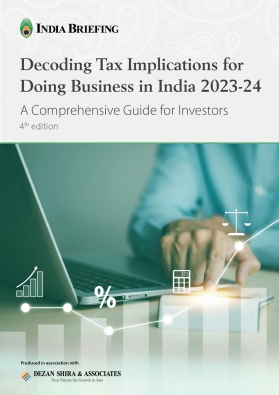Meeting the July 31 ITR Filing Deadline for AY 2023-24 in India: Implications for Businesses
Timely filing and verification of income tax returns (ITR) by the July 31 deadline is necessary for businesses in India to effectively navigate the tax system and avoid penalties and loss of tax benefits.
Navigating the Indian tax landscape effectively is essential for businesses, and timely filing and verification of income tax returns (ITR) play a crucial role in this process.
Meeting the deadline for filing ITRs is of utmost importance, as the government has chosen not to extend the deadline beyond July 31, 2023, for financial year (FY) 2022-23 (Assessment Year (AY) 2023-24).
Businesses need to be well-informed about the implications of late filing to effectively navigate the Indian tax landscape.
Financial implications of missing the July 31 ITR deadline in India
Late filing of ITR can result in the following financial implications, which businesses should be aware of:
- Late filing fee: It is crucial to file the ITR within the specified deadline to avoid penalties and ensure the validity of the return. For FY 2022-23, the deadline is July 31, 2023. Missing this deadline could result in a late filing fee of INR 5,000 (or INR 1,000 for taxpayers with total income up to INR 0.5 million) along with interest on any unpaid tax amount.
- Loss of benefits: Late or non-filing of the ITR can result in the forfeiture of specific deductions and the inability to carry forward losses, with the exception of losses from house property. This could have a notable impact on businesses’ tax planning and overall financial management.
- Penalties for tax evasion: Late or non-filing of ITR may be perceived as an attempt to evade taxes, exposing businesses to severe penalties under section 270A. The penalty amount can be as high as 50 percent of the avoided tax amount, and authorities may initiate prosecution under section 276CC, potentially leading to imprisonment and fines.
- Filing a belated return: While filing a belated return is an option after the deadline, investors must be aware of the financial implications like late filing fees, interest on unpaid tax, and loss of certain benefits.
Reporting foreign income and assets in ITR filing
Individual investors nearing the July 31 ITR filing deadline in India often find Schedule FA challenging.
Introduced to tackle tax evasion and money laundering, Schedule FA is a mandatory part of ITR forms since FY 2011-12 (AY 2012-13). It requires Indian residents to disclose foreign assets and income, regardless of taxability in India. The Black Money (Undisclosed Foreign Income and Assets) and Imposition of Tax Act, 2015, reinforced the obligation for Indian residents to report foreign assets and income.
Schedule FA is included in ITR 2 and ITR 3 forms, which individuals with foreign assets and income must use for filing their income tax returns. Reporting is mandatory regardless of the ownership type of the asset, whether it is legal or beneficial ownership.
Failure to do so or providing inaccurate information in Schedule FA can lead to a penalty of INR 1 million, along with the possibility of rigorous imprisonment for six months to seven years, along with fines.
Taxpayers must report their foreign assets and income for the calendar year 2022 when filing their ITR for FY 2022-23 (AY 2023-24). This entails providing details of foreign assets held and income earned between January 1, 2022, and December 31, 2022, in Schedule FA while submitting their ITR for AY 2023-24.
However, non-resident individuals (NRIs) or not ordinarily resident individuals (NOR) need not make such disclosures.
The following details must be disclosed in Schedule FA:
- Assets held outside India (e.g., shares, debentures, life insurance, immovable property).
- Financial or beneficial interests in overseas entities (e.g., partnership in an overseas LLP, beneficiary of a foreign private trust).
- Signing authority in any bank or trading account outside India.
- Income from foreign sources, such as dividends, interest, or capital gains.
ITR forms for AY 2023-24
|
ITR form |
Eligible taxpayers |
Income criteria |
|
ITR Form 1 (Sahaj)
|
Resident individual |
Income up to INR 5 million Income from: – Salary – One house property – Other sources (interest, etc.) – Agricultural income up to INR 5000 |
|
ITR Form 4 (Sugam)
|
Individuals, Hindu Undivided Family (HUF), and firms (other than LLPs) |
Total income up to INR 5 million Income from business and profession computed under sections 44AD, 44ADA, or 44AE |
|
ITR Form 2
|
Individuals and HUFs (not eligible for Sahaj) |
No income from business or profession
|
|
ITR Form 3
|
Individuals and HUFs (having income from business or profession) |
Income from business or profession |
|
ITR Form 5 |
Partnership firms, LLPs, etc. |
Persons other than individuals, HUFs, and companies |
|
ITR Form 6
|
Companies (other than those claiming exemption under section 11 of Income-tax Act) |
Companies other than companies claiming exemption under section 11 |
|
ITR Form 7 |
Trusts, political parties, charitable institutions, etc. |
Claiming exempt income under the Act |
INVESTING IN INDIA – ACCESS OUR ONLINE BUSINESS GUIDE
This guide provides vital economic, geographic, and regulatory insights and guidance that business investors, managers, or expats need to understand India, and chart their path to a healthy business.
Find spotlight and explainer articles, news updates and factsheets, useful tools, as well as webinars and videos featuring on-the-ground advisors that contribute to the Doing Business in India knowledge.
Tax mobilization and growth targets: Boosting non-income tax revenue
The government’s commitment to enhancing tax revenue from sources other than corporate and individual income taxes is evident in their projections for gross tax receipts and tax revenue growth. Notably, sectors like customs duty and GST collections are expected to play a significant role in achieving these goals during the FY 2023-24.
As of July 31, 2022, the Income Tax Department reported a noteworthy increase in income tax returns filed for AY 2022-23, reaching an impressive 583 million returns compared to the 483 million filed in the previous year.
With the Budget 2023-24 in place, the government aims to achieve gross tax receipts of INR 3361 million during the current fiscal year. An ambitious target of INR 1823 million is set to be raised from sources other than corporate and individual income taxes, signifying a growth of 10.5 percent.
The government expects customs duty collections to witness an 11 percent increase, reaching INR 233 million in FY23, surpassing the revised forecast of INR 210 million. Similarly, GST collections are projected to rise by 12 percent in the upcoming fiscal year, aiming for INR 956 million.
About Us
India Briefing is produced by Dezan Shira & Associates. The firm assists foreign investors throughout Asia from offices across the world, including in Delhi and Mumbai. Readers may write to india@dezshira.com for more support on doing business in India.
We also maintain offices or have alliance partners assisting foreign investors in Indonesia, Singapore, Vietnam, Philippines, Malaysia, Thailand, Italy, Germany, and the United States, in addition to practices in Bangladesh and Russia.
- Previous Article India Reopens PLI India Scheme for Technical Textiles and MMF Apparel and Fabric
- Next Article India’s Legislative Agenda During the 2023 Parliament Monsoon Session








